The Wii U Turns 10: The Best Games on Nintendo’s Least Successful Console
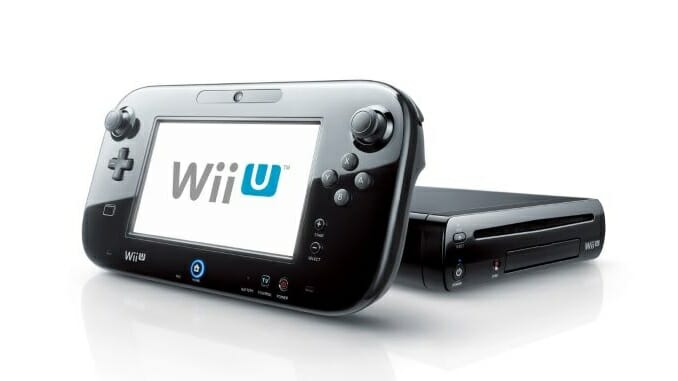
The Wii U, which was released 10 years ago today, was confusing from the start. Although the Wii was a genuine pop culture phenomenon from 2006 to 2009, it fell hard and fast, with sales and interest plummeting over its last few years on the market. Nintendo tried to follow it up with a new console that played on the Wii’s name and reputation while adding the high definition visuals and superior online capabilities that had become the industry standard in the second half of the ‘00s. The Wii was a deeply underpowered system, and although the Wii U made up for a lot of those deficiencies, its poorly chosen name put it behind the 8 ball from day one. It sounded like a new version of the Wii instead of an entirely new console—the kind of generational half-step a console takes when it’s undergoing a slight revision instead of a full replacement—and with the Wii basically being dead at retail for a solid two years before the Wii U’s release, that’s an impression Nintendo needed to avoid.
On top of the weird name, the Wii U also suffered from a misconception over its signature gimmick. Instead of a traditional gaming controller, the Wii U came with a tablet that vaguely resembled an iPad. This GamePad, as Nintendo called it, would offer not just a deeper and more interactive interface for players, but it would also let them play select Wii U directly on the pad itself instead of having to use a TV. If that sounds like the promise of mobile gaming, well, that’s what almost everybody expected. The Wii U wasn’t mobile in any true sense of the world, though. The GamePad couldn’t be more than a few feet away from the Wii U console before it started to have connectivity issues. It was a convenient way to keep playing a game when somebody in your house wanted to use the TV, but you couldn’t take the GamePad in your car or on vacation, which made the whole concept of a gaming tablet feel pointless.
The confusion over the system’s name and the general pointlessness of its chief selling point no doubt contributed to the Wii U’s commercial failure. With just over 13 million units sold in the decade since it debuted, the Wii U has sold barely an eighth of the Wii’s total, and almost exactly 100 million less consoles than its successor, the Switch, has sold in half the time. The Wii U was an undeniable, certified flop for Nintendo—the worst selling home console in the company’s history.
All of this has cast the Wii U’s legacy as a total failure in stone, and although that’s true from a sales perspective, it does a disservice to the ways in which the Wii U was successful. It improved upon the Wii’s Virtual Console by virtue of its handheld second screen, which made it easy to play classics from the ‘80s while watching sports or the news on TV. It also featured a reliably great lineup of new Nintendo games, from high-profile entries in the company’s biggest series, to HD upgrades of recent classics, to at least one brand new franchise that has gone on to be one of Nintendo’s biggest. The Wii U was a failure that Nintendo probably has significant regrets over, but it also provided us with countless hours of fun. We can’t ignore its failings, but we also don’t want to overlook the good things the Wii U offered us during its abbreviated lifetime. So in honor of its 10th anniversary, let’s look back at the best games the Wii U had to offer—16 games that got it right, even as the console as a whole was getting it wrong. Here are our picks, ranked in alphabetical order.
Captain Toad Treasure Tracker
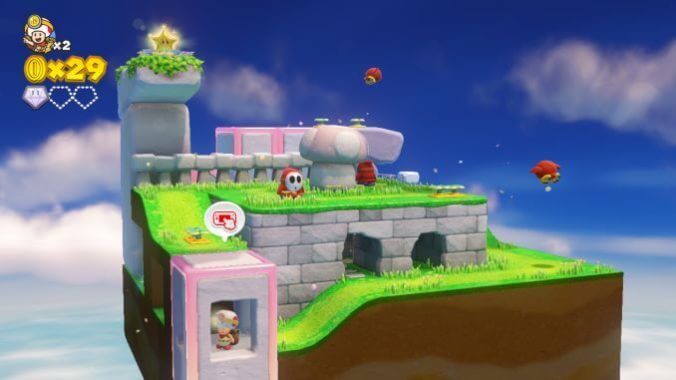
Nintendo excels with puzzle games built around three-dimensional space. Think Picross 3D and Crashmo, two fantastic 3DS games that you should be familiar with. Captain Toad: Treasure Tracker isn’t as laser-focused on puzzle-solving as those two, but by dressing it up in the guise of a platformer Nintendo has created a deeper and more inviting game that also happens to be incredibly adorable. Almost thirty years after Mario first rescued him, Toad finally has a game that perfectly fits his friendly everyman persona.
Donkey Kong Country: Tropical Freeze
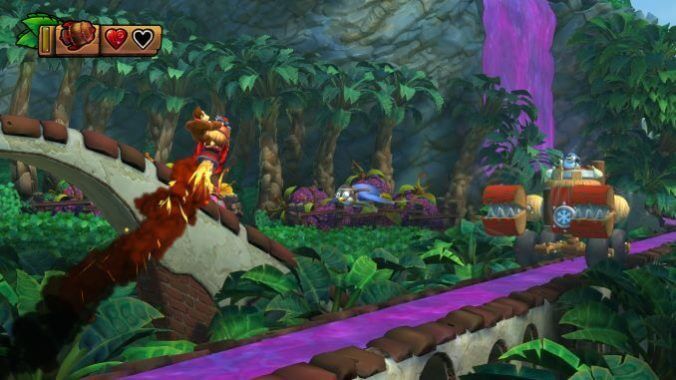
Donkey Kong Country: Tropical Freeze is a beautiful game, in both appearance and demeanor. It is joyous in its joyousness, so happy to make us happy. Games should be beautiful and joyous. Games can be anything and can look like anything, and yet few games are beautiful or joyous—at least few games with the budget of Donkey Kong Country: Tropical Freeze.
The Legend of Zelda: Wind Waker HD
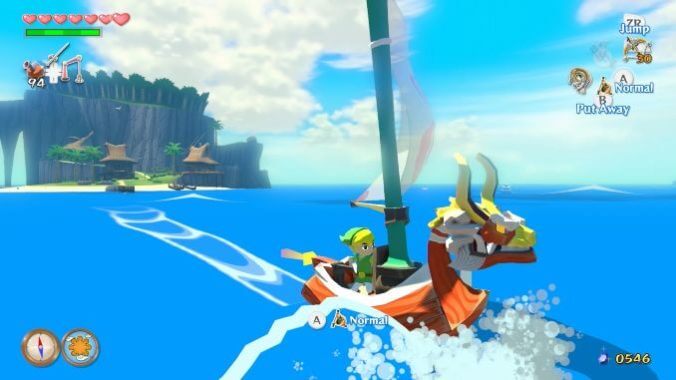
The best Zelda is more beautiful than ever in HD. Wind Waker’s timeless art style embellishes a classic combo of open-ended exploration on the high seas and deadly adventures in some of the series’ best designed dungeons. It’s the best version yet of one of the greatest games of all time.
The Legend of Zelda: Breath of the Wild
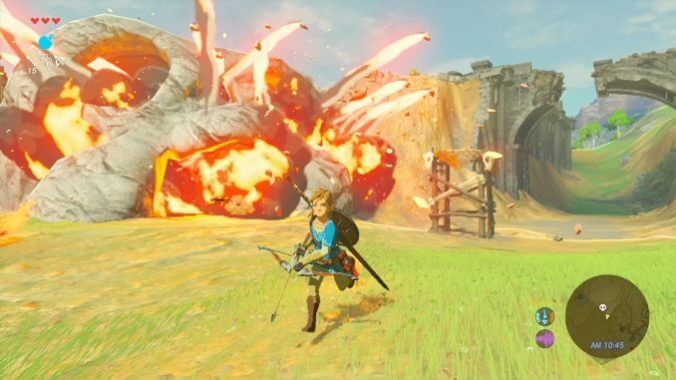
Okay, this probably deserves an asterisk. As Nintendo did with Twilight Princess, they used 2017’s Breath of the Wild to both ring in a new system (in this case, the Switch) and bring the curtain down on an older system. Breath of the Wild was the last major Nintendo release for the Wii U, even if the vast majority of people who’ve played it did so on the Switch. The Wii U version is just as enchanting and awe-inspiring as the one we all fell in love with on that newer console, but with a different approach to handheld play—instead of the genuinely mobile Switch, you’re stuck playing it on the Wii U’s GamePad if you want to take Breath off the TV. Still a fantastic game, and an excellent way to say goodbye to a system.
Mario Kart 8
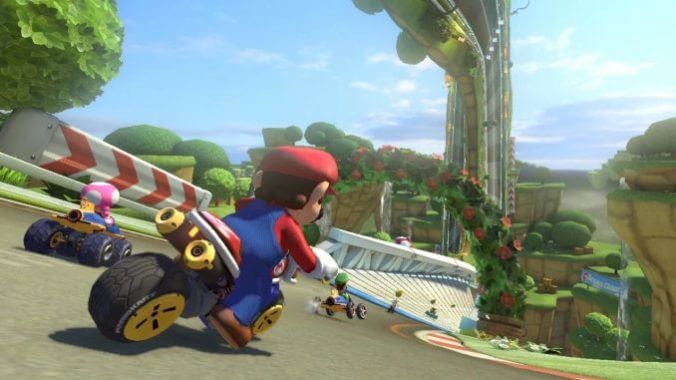
Although it was inevitably supplanted by Mario Kart 8 Deluxe on the Switch, the latest and greatest Mario Kart game originally came out for the Wii U. 2014’s Mario Kart 8 was the first in HD, which made more of a difference than you might think; the game really came to life with the Wii U’s crisper, better-defined images, providing ample opportunity for the designers to get extravagant with the courses, while also making it easier for players to process the visual information they customarily have to speed through as quickly as possible. With a large selection of characters from throughout Mario’s gaming history (as well as other Nintendo series), and a variety of ways to customize your kart, Mario Kart 8 wasn’t just better looking but also a deeper and more satisfying game.
Nintendo Land

Like Wii Sports the goal of Nintendo Land is to introduce players to the new controller at the heart of the Wii U, namely the GamePad tablet. Its 12 minigames don’t all succeed, but the best ones reveal real-world applications for an unusual controller that could easily feel unwieldy.
Pikmin 3
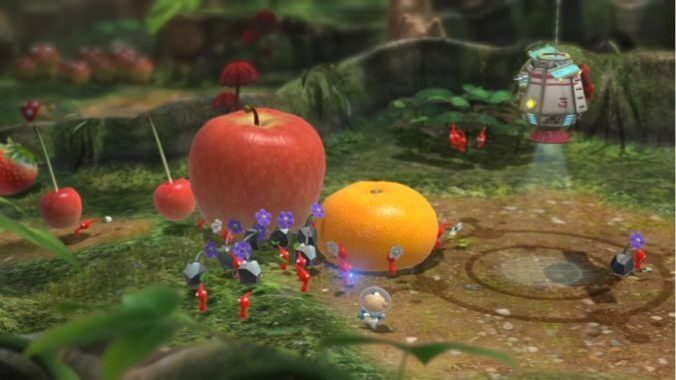
I cried the first time a Pikmin died. I can handle the loss, though. I can take the sadness because it happens in such a bright and lovingly realized world, with its lush fields and its colorful creatures and these weird little plant-animals known as Pikmin. Part of knowing these adorable little critters that regularly give their lives to help me out is knowing how to say goodbye to them. Maddy Myers called Bioshock Infinite and The Last of Us “Dad simulators”. Pikmin 3 isn’t just a strategy game but a pet simulator, with all the joy and pain that comes with owning a real pet.
Rayman Legends
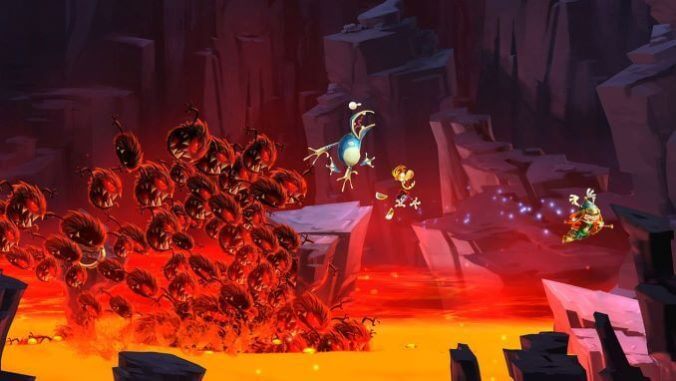
Playfulness is the main constant running through the large amount of varied content within Rayman Legends. Critics often try to avoid the word “fun” because it’s so subjective, but the only other game in recent memory that has so thoroughly embodied the most basic, universal and objective meaning of the word is Rayman Origins—much of which returns as unlockable bonuses within the already superior Legends. Revisiting classic gaming concepts with a timeless sense of humor that everybody can enjoy, Rayman Legends is a videogame without pretense, and that might be the most crucial decision its designers made without even realizing it.
Splatoon
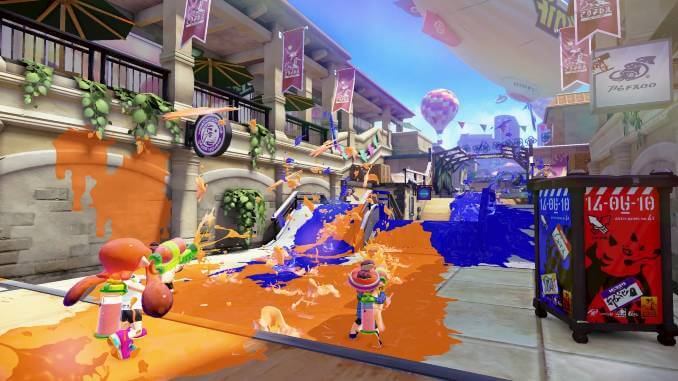
It almost feels weird that the original Splatoon was on the Wii U and not an earlier console. It’s not even 10 years old yet, but it feels like a firmly entrenched Nintendo classic already—an impression solidified by its two excellent Switch installments. Splatoon does everything you hope to see in a top-tier Nintendo game: it innovates in a genre that Nintendo hadn’t really focused on yet (in this case, the multiplayer shooter), in a way that’s colorful, light-hearted, and fun, with gameplay so tight and well-crafted that playing it never really gets old. It’s a testament to how fundamentally well-designed Splatoon is that Nintendo could pump out three games in the series in under eight years without it getting old or played-out. The original was exclusively on the Wii U, though, and ultimately might be the most important game to debut on that ill-fated system.
Super Mario 3D World

The cat suit might be the most visible addition to Super Mario 3D World, but it’s not the only twist on an old idea. Super Mario 3D World doles out inventive new wrinkles throughout the course of the game, regularly surprising you with familiar but subtly changed mechanics. It isn’t content to aimlessly rehash Mario’s past—it approaches that history with reverence but also inspiration, spinning new threads out of old cloth.
Super Mario Maker
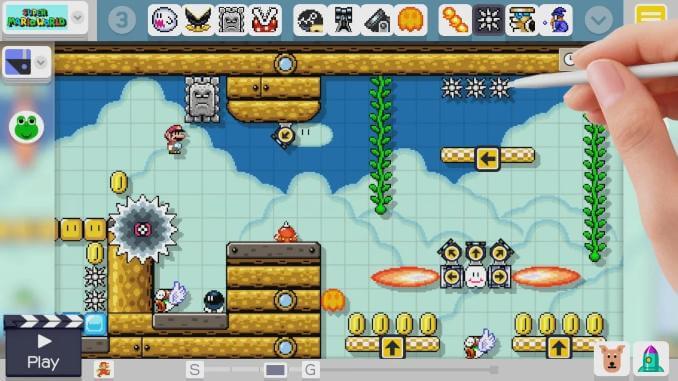
For many players Super Mario or one of its many sequels is the ur-videogame, the first brush with a controller, the most elemental building block in an entire multi-billion dollar industry. The ability to muck about with our most powerful memories and experiences is bewitching and almost unthinkable, but that’s the core of Super Mario Maker. It’s exactly as good and as bad as you think a Super Mario level editor would be, and that’s entirely subjective upon your own thoughts and opinions.
Super Smash Bros. for Wii U
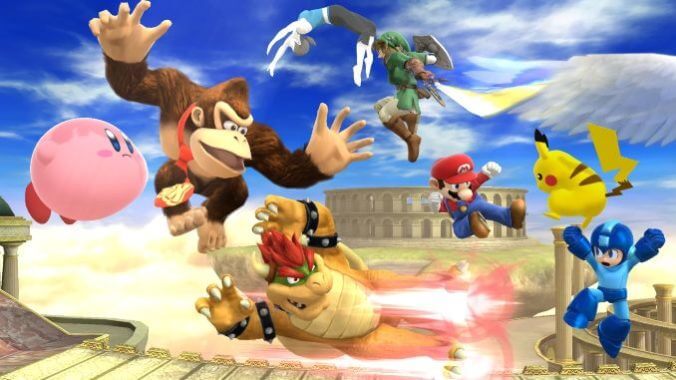
Nintendo’s nostalgic brawler entered the HD era with its Wii U installment, making the postmodern fighter finally feel modern. Smash fans will eternally debate which game is the best, but on the Wii U we started to see what Smash Bros. can truly be—namely, an interactive Nintendo museum that also happens to be a frenetic, over-the-top ballet of violence. For my money 2018’s Switch follow-up outdoes its Wii U predecessor in every way, but it would never exist without the great strides made by the series in the Wii U era.
Xenoblade Chronicles X
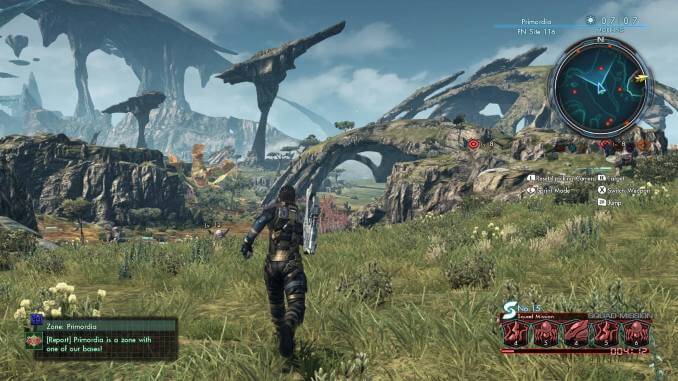
JRPG Xenoblade Chronicles X proudly boasts all the indulgent genre trappings you’d expect: a sprawling cast and story, a massive world to explore, hours of optional business to distract you from that story, a combat system that is barely explained and makes no sense at first but becomes incredibly satisfying once you figure out its systems and tap into its unique rhythm. It will remind you why you once loved this kind of game, back when you were young and had nothing else to do. Xenoblade Chronicles X also surpasses the gorgeous visuals of its predecessor, presenting us with interactive Roger Dean album covers to jaunt through while slaughtering alien dinosaurs.
The Wonderful 101
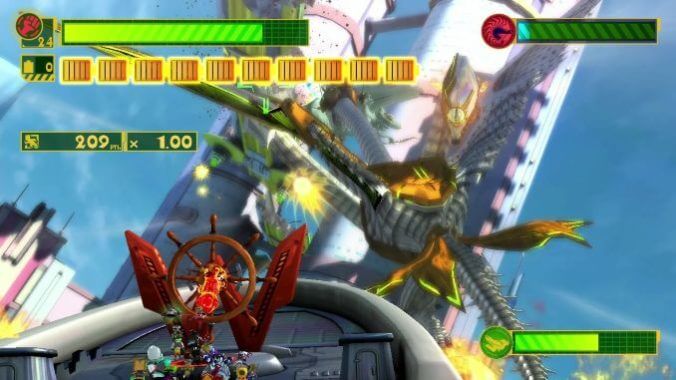
Platinum’s Wonderful 101 never got the love it deserved. Its superheroes rumble through the city in tight formation, dispensing painful justice against invading aliens like a cape-sporting mob. 101 makes smart use of the system’s GamePad, switching the action from the TV to the touch-screen without disrupting the game’s flow, while combining the look of Viewtiful Joe with the minion-based gameplay of Pikmin. The Wonderful 101 felt like one of the few Wii U games that really understood why the GamePad existed and what it could bring to gameplay.
Yoshi’s Woolly World
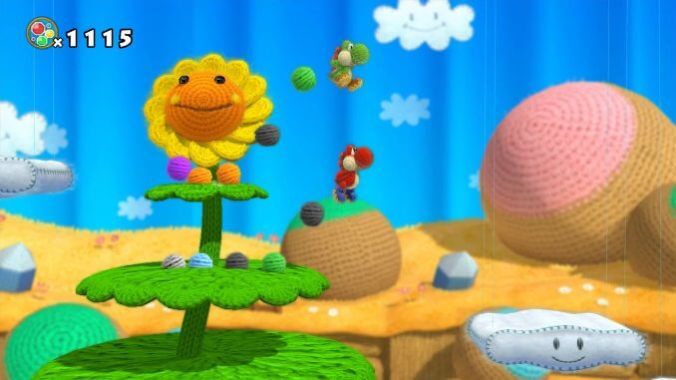
Yoshi’s Woolly World looks old fashioned. At first it’s deeply familiar, recalling Kirby’s Epic Yarn specifically and countless other Nintendo games more broadly, but it has its own specific rhythms and techniques. It doesn’t feel like any of the games you might want to compare it to while you’re playing it, even as it openly lifts various aspects of the Super Mario universe. It pulls in these familiar strands and spins it into something new and exciting.
Zombi U

Zombi U is an especially difficult zombie game that integrally incorporates the GamePad into its action. It’s an intense, brutal affair where you will inevitably inhabit a string of different characters. When you die you start over as a new character, and have to hunt down and kill your now-zombified previous character in order to regain whatever possession you had when you died. It’s the most “mature” Wii U exclusive, probably the Wii U game that would most appeal to the so-called “hardcore” audience, and one of the few third-party Wii U games that makes full use of the tablet.
Senior editor Garrett Martin writes about videogames, comedy, travel, theme parks, wrestling, and anything else that gets in his way. He’s also on Twitter @grmartin.